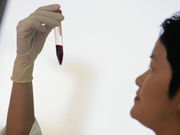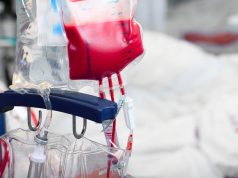WAHA developed in six patients at two to four weeks after babesiosis diagnosis; all six patients asplenic
FRIDAY, March 10, 2017 (HealthDay News) — Warm autoimmune hemolytic anemia (WAHA) develops in some patients after babesiosis, with asplenic patients at increased risk, according to a study published in the March 9 issue of the New England Journal of Medicine.
Anne E. Woolley, M.D., from Harvard Medical School in Boston, and colleagues conducted a retrospective cohort study of all patients with babesiosis from a single center from January 2009 to June 2016. Data were extracted on covariates of interest, including any hematologic complications occurring within three months after diagnosis and treatment of babesiosis.
The researchers found that 18 of the 86 patients with a babesiosis diagnosis were asplenic. Six patients developed WAHA at two to four weeks after babesiosis diagnosis, by which time all patients had experienced clinical and laboratory responses to antimicrobial babesiosis treatment, which included clearance of Babesia microti parasitemia. All six patients were asplenic (P < 0.001), and positive direct antiglobulin tests for immunoglobulin G and complement component 3 were seen for them; all these patients had warm autoantibodies. There was no alternative explanation for clinical hemolysis. In four of the six patients WAHA required immunosuppressive treatment.
“We documented post-babesiosis WAHA in patients who did not have a history of autoimmunity; asplenic patients appeared to be particularly at risk,” the authors write.
Copyright © 2017 HealthDay. All rights reserved.








